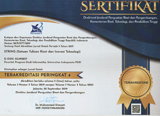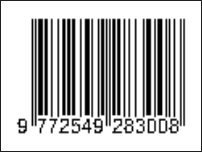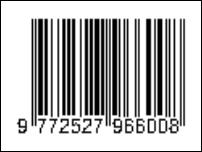Analisis Performa ResNet-152 dan AlexNet dalam Klasifikasi Jenis Kanker Kulit
(1) Universitas Multi Data Palembang
(2) Universitas Multi Data Palembang
(*) Corresponding Author
Abstract
Skin cancer is a dangerous disease. The most common skin cancers in Indonesia is melanoma. Melanoma cases reached 9,6 million in 2018. Skin cancer can be cured with proper and quick treatment. Skin cancer early detection can be done by detection system types of skin cancer based on benign and malignant classes using Convolutional Neural Network (CNN) with ResNet-152 and AlexNet architecture. The data are taken from the 2019 International Skin Imaging Collaboration (ISIC) archives. The optimizer algorithms used are Adaptive Moment Estimation (Adam) and Mini-Batch Gradient Descent (MBGD). The result of the research indicates that ResNet-152 architecture using MBGD optimizer gives the best result with an accuracy of 87.85%
Keywords
Full Text:
PDFReferences
A. Rosana, P. Wijaya, dan F. Bimantoro, “Sistem Pakar Diagnosa Penyakit Kulit pada Manusia dengan Metode Dempster Shafer,” J. Comput. Sci. Informatics Eng., vol. 4, no. 2, hal. 129–138, Des 2020, doi: 10.29303/jcosine.v4i2.285.
A. Tarbuk, A. M. Grancari?, dan M. Šitum, “Skin Cancer and UV Protection,” Autex Res. J., vol. 16, no. 1, hal. 19–28, Mar 2016, doi: 10.1515/aut-2015-0050.
N. C. F. Codella, D. Gutman, M. E. Celebi, B. Helba, M. A. Marchetti, S. W. Dusza, A. Kalloo, K. Liopyris, N. Mishra, H. Kittler, dan A. Halpern, “Skin lesion analysis toward melanoma detection: A challenge at the 2017 International symposium on biomedical imaging (ISBI), hosted by the international skin imaging collaboration (ISIC),” in Proceedings - International Symposium on Biomedical Imaging, IEEE, Okt 2018, hal. 168–172. doi: 10.1109/ISBI.2018.8363547.
M. R. Hasan, M. I. Fatemi, M. Monirujjaman Khan, M. Kaur, dan A. Zaguia, “Comparative Analysis of Skin Cancer (Benign vs. Malignant) Detection Using Convolutional Neural Networks,” J. Healthc. Eng., vol. 2021, hal. 1–17, Des 2021, doi: 10.1155/2021/5895156.
B. Harangi, A. Baran, dan A. Hajdu, “Assisted deep learning framework for multi-class skin lesion classification considering a binary classification support,” Biomed. Signal Process. Control, vol. 62, Sep 2020, doi: 10.1016/j.bspc.2020.102041.
W. Yan, I. I. Wistuba, M. R. Emmert-Buck, dan H. S. Erickson, “Squamous Cell Carcinoma - Similarities and Differences among Anatomical Sites.,” Am. J. Cancer Res., vol. 1, no. 3, hal. 275–300, 2011, [Daring]. Tersedia pada: www.ajcr.us
D. Z. Haq, “Klasifikasi Citra Kanker Kulit Menggunakan Convolutional Neural Network Model Googlenet,” UIN Sunan Ampel Surabaya, 2021. [Daring]. Tersedia pada: http://digilib.uinsby.ac.id/id/eprint/46741
D. Gunawan dan H. Setiawan, “Convolutional Neural Network dalam Citra Medis,” KONSTELASI Konvergensi Teknol. dan Sist. Inf., vol. 2, no. 2, hal. 376–390, Mei 2022, doi: 10.24002/konstelasi.v2i2.5367.
C. C. Aggarwal, Neural Networks and Deep Learning, 1 ed. Cham: Springer International Publishing, 2018. doi: 10.1007/978-3-319-94463-0.
I. Singh, G. Goyal, dan A. Chandel, “AlexNet architecture based convolutional neural network for toxic comments classification,” J. King Saud Univ. - Comput. Inf. Sci., Okt 2022, doi: 10.1016/j.jksuci.2022.06.007.
B. Falahkhi, E. F. Achmal, M. Rizaldi, R. Rizki, dan N. Yudistira, “Perbandingan Model AlexNet dan ResNet dalam Klasifikasi Citra Bunga Memanfaatkan Transfer Learning Comparison of AlexNet and ResNet Models in Flower Image Classification Utilizing Transfer Learning,” J. Ilmu Komput. Agri-Informatika, vol. 9, no. 1, hal. 70–78, 2022, [Daring]. Tersedia pada: http://journal.ipb.ac.id/index.php/jika
D. P. Kingma dan J. L. Ba, “Adam: A Method for Stochastic Optimization,” ICLR, Des 2015, [Daring]. Tersedia pada: http://arxiv.org/abs/1412.6980
F. R. J. Simanungkalit, H. Hanifah, G. Ardaneswari, N. Hariadi, dan B. D. Handari, “Prediction of students’ academic performance using ANN with mini-batch gradient descent and Levenberg-Marquardt optimization algorithms,” in Journal of Physics: Conference Series, IOP Publishing Ltd, Nov 2021. doi: 10.1088/1742-6596/2106/1/012018.
P. Tschandl, C. Rosendahl, dan H. Kittler, “Data descriptor: The HAM10000 dataset, a large collection of multi-source dermatoscopic images of common pigmented skin lesions,” Sci. Data, vol. 5, no. 1, hal. 180161, Agu 2018, doi: 10.1038/sdata.2018.161.
M. Combalia, N. C. F. Codella, V. Rotemberg, B. Helba, V. Vilaplana, O. Reiter, C. Carrera, A. Barreiro, A. C. Halpern, S. Puig, dan J. Malvehy, “BCN20000: Dermoscopic Lesions in the Wild,” Agu 2019, [Daring]. Tersedia pada: http://arxiv.org/abs/1908.02288
H. Luqman, Z. Sari, dan Handhajani, “Klasifikasi Citra Pigmen Kanker Kulit Menggunakan Convolutional Neural Network,” J. RESTI (Rekayasa Sist. dan Teknol. Informasi), vol. 5, no. 2, hal. 379–385, Apr 2021, doi: 10.29207/resti.v5i2.3001.
DOI: http://dx.doi.org/10.30998/string.v8i1.16464
Refbacks
- There are currently no refbacks.
Copyright (c) 2023 Tommy Saputra

This work is licensed under a Creative Commons Attribution 4.0 International License.
STRING (Satuan Tulisan Riset dan Inovasi Teknologi) indexed by:

Ciptaan disebarluaskan di bawah Lisensi Creative Commons Atribusi 4.0 Internasional.
View My Stats

 Sertifikat Akreditasi
Sertifikat Akreditasi
















